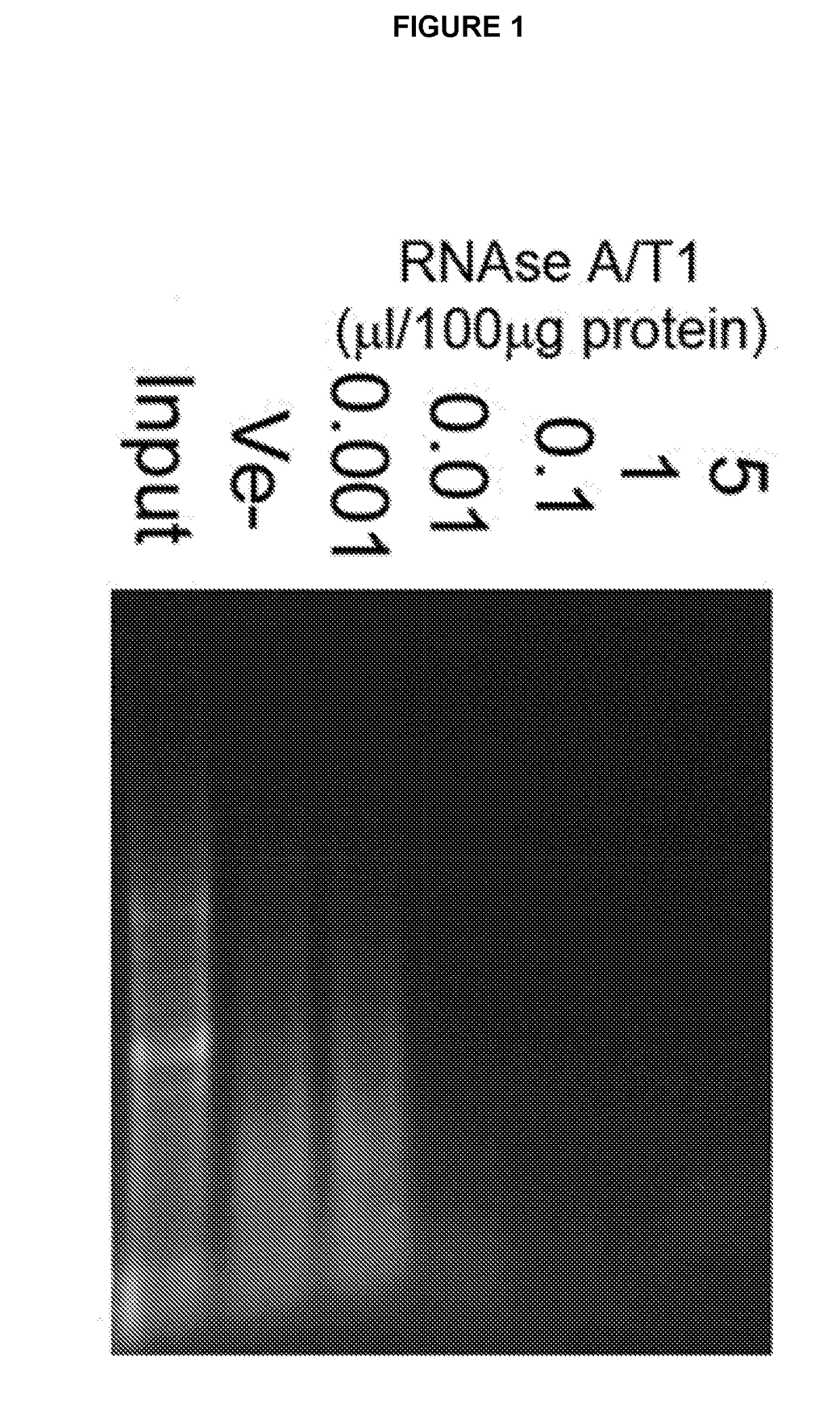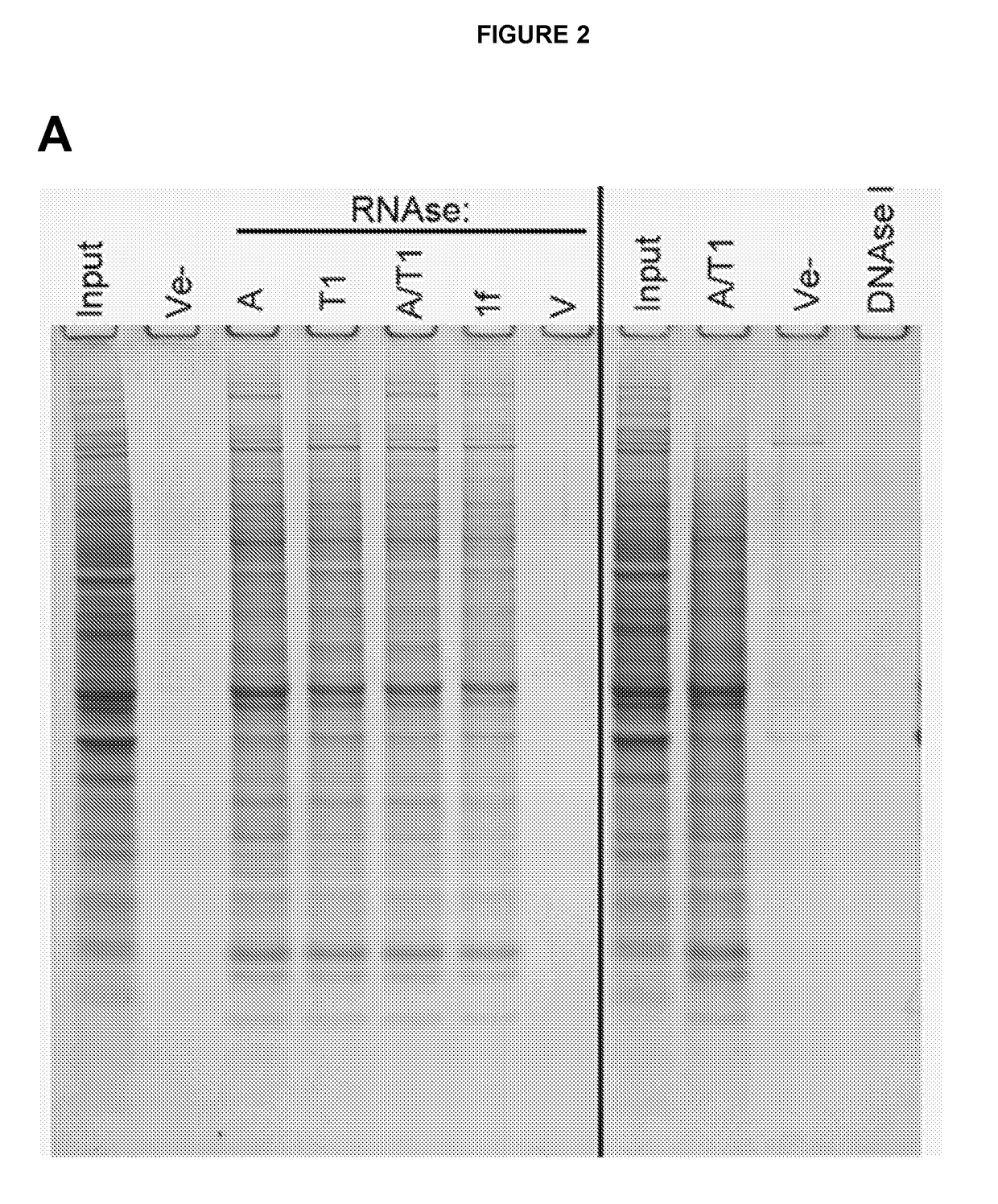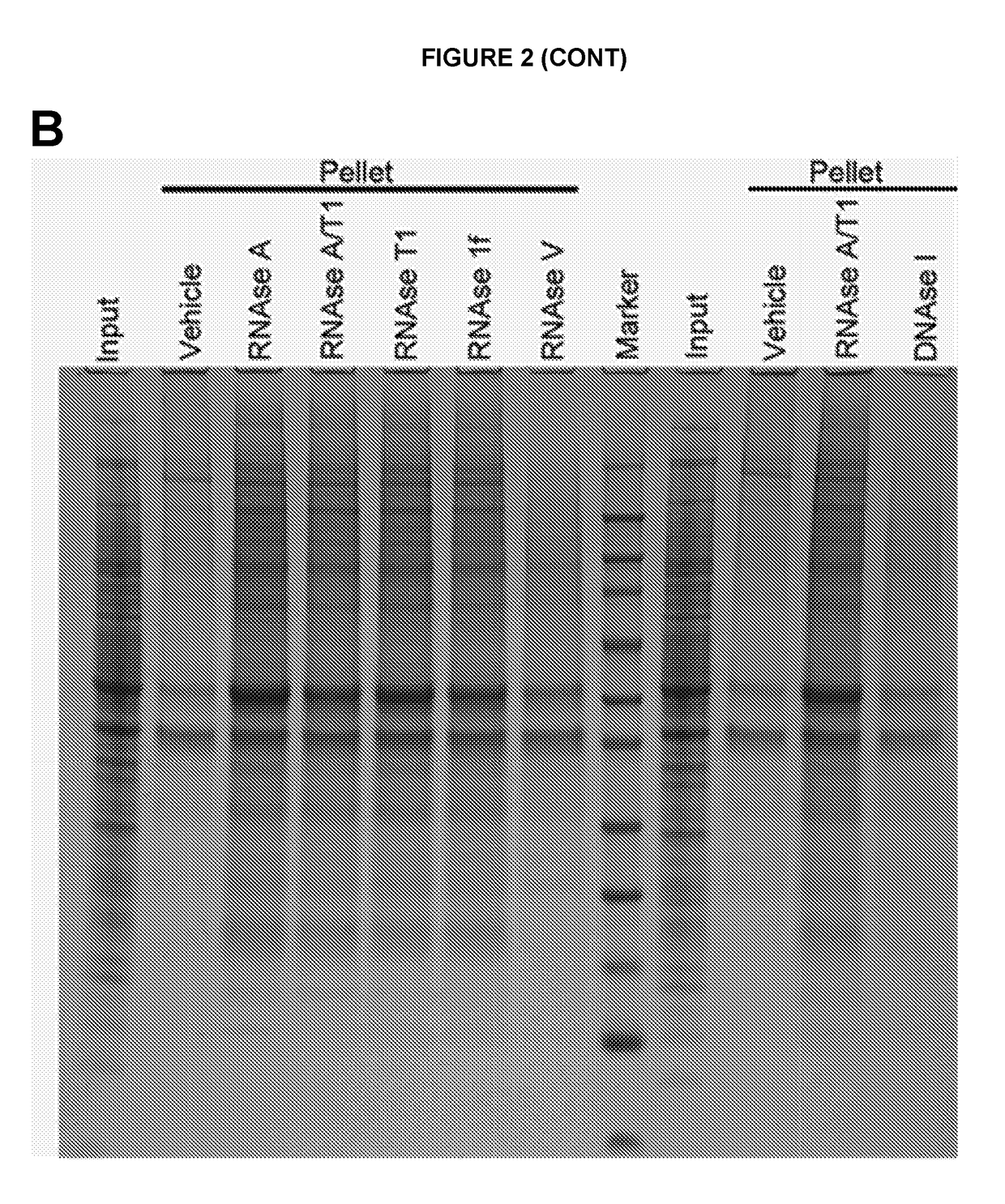Method for Preventing or Treating a Protein Aggregation Disease
a protein aggregation and disease technology, applied in the field of protein aggregation disease prevention or treatment, can solve the problems of curative treatment strategies, poor understanding, and inability to accurately predict the causes of aggregate generation, and achieve the effect of reducing the effect of rna expression
- Summary
- Abstract
- Description
- Claims
- Application Information
AI Technical Summary
Benefits of technology
Problems solved by technology
Method used
Image
Examples
example 1
iated Precipitation of Proteins
[0184]Lysates prepared from human neurons and mouse brain cortex were treated with RNAse A and T1 and the precipitated proteins were analysed. RNase treatment caused a concentration-dependent precipitation of several proteins from both human neurons and mouse brain (FIGS. 6b and c). Comparing the protein profiles of the same amount of protein from the input and the RNase-precipitated samples showed that many of the precipitated proteins were enriched compared to input. No detectable difference was observed between the input and the supernatant. In addition, analysis of RNA upon completion of RNase-mediated digestion indicated that the amount and size distribution of recovered RNA decreased with increasing RNase concentration (FIG. 1).
example 2
ng the Impact of the Source of RNase
[0185]The aggregation effect was tested with various different RNases. It was shown that the source of single-stranded specific RNase was not important for the overall efficiency of protein precipitation and each of RNase A, RNase T1 and RNase 1f showed similar efficiency to the RNase / T1 mixture (FIGS. 2 and 6d). However, digestion with RNase V1, which is specific for double-stranded RNA, or DNase I failed to cause protein precipitation (FIG. 2). RNAse V1 only caused protein precipitation if EDTA was omitted from the buffer and replaced with Mg2+ (FIG. 6d), consistent with the requirement of RNAse V1 for divalent ions. However, DNAse I failed to cause protein precipitation under both conditions (FIG. 6d). No proteins above background were precipitated when ribonuclease inhibitors were added to the lysate together with RNAse A (FIG. 6e). Furthermore, to ensure that the ribonuclease degradation products were not responsible for protein precipitation...
example 3
ation of the Proteins Precipitated by RNA Removal
[0186]To identify the proteins which are precipitated by RNA removal in human neurons, precipitated proteins were separated from two independent experiments by SDS-PAGE followed by tandem mass spectrometry (LC-MS / MS) analysis. More than 1600 proteins were identified which were common to both samples, representing an overlap of more than 75% (FIG. 7a). Gene ontology analysis of the data-set indicates firstly; an over-representation of cytosolic proteins and ribonucleoprotein complexes, and secondly, a significant over-representation of proteins involved in protein-protein interactions (60%, 982), nucleotide binding (26%, 438), RNA binding (13%, 214), and structural ribosomal proteins (95) (FIG. 7b). There are no obvious sequence or structural similarities between the precipitated proteins. Unstructured, low-complexity regions in several RNA-binding proteins have previously been suggested to mediate protein aggregation and to be require...
PUM
| Property | Measurement | Unit |
|---|---|---|
| molecular weight | aaaaa | aaaaa |
| pH | aaaaa | aaaaa |
| temperature | aaaaa | aaaaa |
Abstract
Description
Claims
Application Information
 Login to View More
Login to View More - R&D
- Intellectual Property
- Life Sciences
- Materials
- Tech Scout
- Unparalleled Data Quality
- Higher Quality Content
- 60% Fewer Hallucinations
Browse by: Latest US Patents, China's latest patents, Technical Efficacy Thesaurus, Application Domain, Technology Topic, Popular Technical Reports.
© 2025 PatSnap. All rights reserved.Legal|Privacy policy|Modern Slavery Act Transparency Statement|Sitemap|About US| Contact US: help@patsnap.com



